English Name: Barberry
Other Names in English (UK, USA, Canada, South Africa, Australia, New Zealand): Berbéris Vulgaire, Common Barberry, Jaundice Berry, Piprage, Vinetteier.
Family: Berberidaceae
GENERAL DATA
Plant parts: Fruit
Cultivation mode: Wild collection\Cultivated
In manufacturing: Pharmaceutical, extracts, wine, leather making, cloth dyeing (woolen, silk and cotton).
In food: Jam, sauce, cake, pickle, beverage, herbal tea, paste, syrup, food.
🌿 Industries That Use Dried Barberry (Berberis vulgaris L.)
Dried barberries—known for their tart-sour flavor, high vitamin C, and antioxidant content—are widely valued across culinary, medicinal, and cosmetic industries.
The fruit contains berberine, vitamin C, polyphenols, and organic acids, contributing to both flavor and health functionality.
1. Food & Culinary Industry
Barberry is an iconic ingredient in Persian and Central Asian cuisines and is gaining popularity in global gourmet and health-conscious cooking.
Applications:
-
Signature in dishes like Zereshk Polo (barberry rice)
-
Added to pilafs, stews, couscous, and stuffed poultry
-
Used in baked goods, trail mixes, tangy chutneys, and fruit leathers
✅ Offered in sun-dried or shade-dried form for culinary freshness
2. Nutraceutical & Functional Food Industry
The high antioxidant content and presence of berberine give dried barberry its value in functional nutrition and wellness foods.
Applications:
-
Incorporated into immune-boosting snack bars, antioxidant blends, and digestive teas
-
Added to capsule-based supplements focused on blood sugar and cholesterol regulation
-
Used in herbal detox formulations and gut microbiota support
✅ Naturally tart flavor allows sugar-free applications in diabetic and metabolic blends
3. Herbal & Traditional Medicine
Barberry is a traditional remedy in Persian, Unani, Ayurvedic, and European systems for liver, digestive, and metabolic support.
Applications:
-
Used in tonics for liver and gallbladder health
-
Helps with constipation, inflammation, and poor appetite
-
Known for its mild antibacterial, antifungal, and antipyretic properties
✅ Often paired with Milk Thistle, Dandelion, and Fennel
4. Cosmetic & Skincare Industry
Barberry extract is valued in skincare for its antibacterial and brightening effects.
Applications:
-
Used in anti-acne creams, toners, and face masks
-
Included in skin lightening serums for pigmentation regulation
-
Part of herbal facial scrubs and antioxidant treatments
✅ Berberine-rich extracts help with inflammatory skin conditions
5. Beverage & Tea Industry
Barberry is emerging in herbal tea formulations, both as a flavoring component and a functional fruit.
Applications:
-
Blended into hibiscus-rosehip teas, detox infusions, and fruit-based tisanes
-
Cold-brew or syrup infusions for functional wellness beverages
-
Used in fermented drinks and fruit-vinegar infusions
✅ Its acidity and brightness balance heavier herbs in detox blends
6. Ethnic & Export Markets
Dried barberry is a staple in Iranian markets and increasingly found in gourmet and ethnic sections of international retailers.
Applications:
-
Sold as premium culinary spice-fruit in Middle Eastern and European stores
-
Available in bulk export for restaurants, tea companies, and health shops
-
Featured in gift packs, spice kits, and herbal samplers
✅ Exported widely from Iran, Turkey, and Central Asia
✅ Summary of Key Applications
| Industry | Common Uses |
|---|---|
| Food & Culinary | Pilafs, poultry, baked goods, gourmet condiments |
| Nutraceutical | Immune blends, blood sugar capsules, antioxidant bars |
| Herbal Medicine | Liver support, gut health, infection resistance |
| Cosmetic & Skincare | Acne care, skin lightening, inflammation relief |
| Tea & Beverage | Herbal teas, detox blends, sour tonics |
| Ethnic & Export Markets | Bulk dried fruit, gourmet spice kits, Persian cuisine staples |
🌟 Key Features
-
Rich in vitamin C, berberine, and anthocyanins
-
Offers bright acidity, making it a culinary and functional favorite
-
Used in traditional medicine as a gentle bitter tonic
-
Available in whole dried, chopped, powdered, or infused forms
-
Commercial demand rising in health food, skincare, and functional beverage sectors
🌿 Industries That Use Dried Barberry (Berberis integerrima Bunge)
Berberis integerrima is a wild shrub native to Iran, Central Asia, and the Middle East, bearing dark purple to nearly black berries that are smaller, more bitter, and more medicinal than Berberis vulgaris.
The fruit is known for its high berberine, anthocyanins, and polyphenol content, making it a niche ingredient in natural health, phytopharmaceutical, and regional spice industries.
Also known as wild black barberry or mountain barberry. This species differs from Berberis vulgaris in color, taste, and phytochemical profile, and has its own place in traditional medicine, functional food, and regional culinary practices.
1. Herbal & Traditional Medicine Industry
Wild barberry fruit has long-standing use in Persian, Unani, and folk medicine as a detoxifier, antimicrobial, and liver tonic.
Applications:
-
Used in liver and gallbladder tonics
-
Supports bile secretion, digestion, and intestinal microbial balance
-
Helps with diarrhea, infections, and blood purification
✅ Often used in cold decoctions, herbal syrups, or macerated vinegar infusions
2. Nutraceutical & Functional Ingredient Industry
With higher berberine content than B. vulgaris, this species is valued for metabolic and cardiovascular support.
Applications:
-
Incorporated into blood sugar management formulas
-
Found in cholesterol-lowering and weight-regulating supplements
-
Added to immune-boosting and detox capsules
✅ Available in fruit powder, standardized extract, or freeze-dried forms
3. Tea & Beverage Industry
Though more bitter than red barberry, B. integerrima is gaining interest in functional tea blends and bitter herbal tonics.
Applications:
-
Used in digestive herbal teas with mint or fennel
-
Combined with Rosehip, Sour Cherry, or Hibiscus for antioxidant blends
-
May be added to bitter aperitifs or traditional mountain syrups
✅ Requires skillful blending due to its strong bitterness
4. Food & Culinary Industry (Niche & Regional)
Less common than B. vulgaris in cuisine, but still used regionally in spiced condiments, pickles, and fermented foods.
Applications:
-
Pickled with herbs and vinegar for digestive condiments
-
Ground and added to savory spice rubs or wild sauces
-
Used in fermented yogurt dips or herbal kashks in some mountain communities
✅ Has astringent, bitter, and sour properties
5. Cosmetic & Dermatological Industry
Due to its antioxidant-rich, berberine-loaded content, it is explored for use in skin-supportive products.
Applications:
-
Anti-acne and clarifying tonics
-
Added to anti-aging serums for pigment and inflammation balance
-
Used in ethnobotanical skincare treatments
✅ Berberine has shown broad antimicrobial and anti-inflammatory effects
6. Ethnobotanical & Export Markets
Especially in mountain regions of Iran and Central Asia, wild black barberry is traded for medicinal and export use.
Applications:
-
Sold as wild-harvested medicinal fruit
-
Included in herbal pharmacies and apothecaries
-
Exported for berberine extraction or niche food blends
✅ Valued in natural health, wild food, and sustainable export sectors
✅ Summary of Key Applications
| Industry | Common Uses |
|---|---|
| Herbal & Traditional Medicine | Liver tonic, antimicrobial, digestive detox |
| Nutraceutical | Berberine-based formulas, metabolic support, immune aid |
| Tea & Beverage | Bitter teas, detox tisanes, regional syrups |
| Food & Culinary | Pickles, spice blends, wild fermented condiments |
| Cosmetic & Dermatological | Anti-acne skincare, clarifying treatments |
| Ethnobotanical & Export | Medicinal fruit, berberine source, niche herbal trade |
🌟 Key Features of Berberis integerrima Fruit
-
Small, black to deep purple berries with bitter-astringent taste
-
High berberine content (more than B. vulgaris)
-
Used primarily in herbal medicine and functional formulations
-
Found wild in mountains of Iran, Kurdistan, Afghanistan, Central Asia
-
Available as whole dried berries, powder, or berberine extract
🌿 Industries That Use Barberry Root (Berberis spp.)
Barberry root is a potent herbal remedy widely used across traditional and modern pharmacological systems for its antimicrobial, anti-inflammatory, and metabolic regulatory properties. It is also a valuable berberine source, often replacing or complementing Goldenseal and Oregon grape root in herbal formulations.
1. Pharmaceutical & Phytotherapy Industry
Barberry root is a major berberine source, used in evidence-based formulations for diabetes, liver health, and infection control.
Applications:
-
Incorporated into glycemic support supplements
-
Used in formulas for fatty liver, gallbladder function, and chronic inflammation
-
Studied for anti-diabetic, anti-cancer, and cardiovascular protective roles
✅ Standardized berberine extract (from barberry) is widely used in clinical nutraceuticals
2. Herbal & Traditional Medicine
In Persian, Ayurvedic, Unani, and Traditional European Medicine, barberry root is a bitter tonic and infection-fighting agent.
Applications:
-
Treats gastrointestinal infections, liver stagnation, and skin issues
-
Used in malarial fevers, eye conditions, and chronic fatigue
-
Functions as a blood purifier, bile stimulant, and mucous membrane tonic
✅ Often paired with Dandelion root, Artichoke, or Peppermint in traditional protocols
3. Nutraceutical & Functional Supplement Industry
Berberine extracted from barberry root is among the top botanical ingredients in metabolic health supplements.
Applications:
-
Formulated for type 2 diabetes, obesity, insulin resistance, and PCOS
-
Also used in cholesterol management and microbiome-targeting products
-
Supports gut barrier health, intestinal flora, and anti-inflammatory response
✅ Sold as capsules, tablets, powders, and standardized extracts (97% berberine)
4. Veterinary & Animal Health
Barberry root powder and extract are used in herbal parasite management and digestive tonics for animals.
Applications:
-
Added to natural deworming blends for livestock
-
Used in gut health formulations for poultry and ruminants
-
Included in botanical parasite control supplements
✅ Alternative to synthetic antimicrobials in sustainable veterinary practice
5. Cosmetic & Dermatological Industry
Barberry root extract is used topically for acne, eczema, and skin inflammation due to its berberine content.
Applications:
-
Included in herbal cleansers, serums, and clarifying masks
-
Used for microbial acne, fungal skin issues, and scalp treatments
-
Sometimes added to brightening and pigmentation-balancing serums
✅ Berberine supports skin clarity and antimicrobial defense
6. Dye & Natural Color Industry (Traditional Use)
Traditionally, barberry root was used as a natural yellow dye for fabrics and crafts.
Applications:
-
Source of plant-based yellow pigment for wool, cotton, and paper
-
Used in botanical dyeing workshops and ethnobotanical crafts
✅ Pigment derived from berberine and related isoquinoline alkaloids
✅ Summary of Key Applications
| Industry | Common Uses |
|---|---|
| Pharmaceutical & Phytotherapy | Berberine extraction, liver & metabolic support |
| Herbal & Traditional Medicine | Digestive tonic, antimicrobial, bitter liver remedy |
| Nutraceutical | Blood sugar control, lipid balance, anti-inflammatory support |
| Veterinary Health | Natural dewormers, gut health tonics, livestock supplements |
| Cosmetic & Dermatology | Acne care, fungal treatment, clarifying skincare |
| Natural Dye Industry | Traditional yellow dye for textiles and crafts |
🌟 Key Features of Barberry Root
-
Rich in berberine, oxyacanthine, and palmatine
-
Has bitter, antimicrobial, and hepatoprotective properties
-
Available as whole dried root, powdered, fluid extract, or standardized berberine
-
Sustainable botanical alternative to Goldenseal (Hydrastis canadensis)
-
Requires careful dosing due to potency and potential GI irritation
📊 Comparison Table: Berberis vulgaris Fruit vs Berberis integerrima Fruit vs Barberry Root
| Feature | Barberry Fruit (B. vulgaris) | Wild Barberry Fruit (B. integerrima) | Barberry Root (B. spp.) |
|---|---|---|---|
| Plant Part | Ripe red berries | Ripe dark purple to black berries | Woody root or root bark |
| Taste Profile | Tart, tangy, slightly sweet | Sour, bitter, and astringent | Bitter, earthy |
| Color | Bright red | Dark purple/black | Yellow (interior), brown (exterior) |
| Key Phytochemicals | Vitamin C, anthocyanins, pectin | Berberine (modest), anthocyanins, acids | Berberine (high), oxyacanthine, palmatine |
| Traditional Uses | Culinary, mild digestion, fever | Liver support, microbial balance | Liver, gallbladder, antimicrobial, metabolic |
| Primary Benefits | Immune boost, antioxidant, digestive support | Detox, liver-cleansing, astringent | Blood sugar, liver, antimicrobial, inflammation |
| Typical Use Form | Culinary spice, tea, infusion, jam | Herbal decoctions, infusions, powders | Capsules, tinctures, extracts, teas |
| Used In | Food, nutraceuticals, teas, cosmetics | Functional herbal blends, ethnic medicine | Herbal medicine, pharma, supplements |
| Industries | Culinary, nutraceutical, cosmetics | Herbal medicine, export, detox teas | Pharmaceutical, nutraceutical, veterinary, cosmetics |
| Potency Level | Mild to moderate | Moderate | Strong |
| Safety Notes | Safe in culinary amounts | Stronger, may need dose control | High potency—use under supervision in high doses |
| Geographic Source | Cultivated in Iran, Turkey, Eastern Europe | Wild-harvested in Iranian and Central Asian mountains | Cultivated and wild across Eurasia |
| Cultural Relevance | Featured in Persian dishes (e.g., Zereshk Polo) | Used in mountain folk remedies | Ancient bitter tonic in Persian and Ayurvedic medicine |
✅ Summary Notes
-
🍒 B. vulgaris fruit is the culinary and mild medicinal type, suitable for general use in food and light herbal infusions.
-
🍇 B. integerrima fruit is stronger, more bitter, and used for detox and traditional remedies, especially in wild-crafted herbalism.
-
🌿 Barberry root is the most potent medicinal form, valued for its berberine content and used in modern metabolic and liver health protocols.
HARVEST CALENDAR
Feb
Mar
Apr
May
Jun
Jul
Aug
Sep
Oct
Nov
Dec
To order Iranian Barberry in bulk, please contact us.
About Berberis Vulgaris
Barberry is the fruit of a shrub that reaches two meters in height and has many varieties. This shrub has many branches, relatively thin, prickly and red-brown. Thorns of this shrub usually grow in threes and are the same color as the stems. The leaves are usually oval and sometimes rhomboid, and their side is saw-shaped and has blades. The flowers are yellow and small and grow in clusters. Each flower has two rows of petals, each row usually contains six petals. The inner petals are smaller and thicker. But the outer petals are bigger and thinner. The petals of Berberis vulgaris flowers are circular and bowl-shaped.
The fruits of the shrub are very small, oval, slightly elongated and fleshy, have a sour taste and grow in clusters. These fruits are yellowish green at first. But after fully ripening, they turn red. The ripe fruit of some species of Berberis Vulgaris is purple. The fruit is either seedless or has two very small seeds. The best barberry is seedless.
Barberry Temperament
Cold and dry.
Barberry Health Benefits
1. Pour Piprage in water, leave it for a few hours, then strain and squeeze barberries and drink it. It reduces yellow bile in the blood and excretes yellow bile through the liver and treat vomiting.
2. Brew it and squeeze it with pressure and drink it. It purifies the blood, eliminates bad breath, is astringent, stops the flow of blood from hemorrhoids and prevents chronic bleeding.
5. Eat its jam or syrup. It increases appetite, strengthens the liver, cools and quenches thirst and stomach upset.
6. Mix Barberry with Tamarind and brew and strain it by pressure, drink it and keep it in your mouth. Removes Aphthous.
Barberry Side Effects
It’s not good for people who cough.
Barberry Modifier
Honey.
🧾 Nutrition Facts – Dried Barberry (Berberis vulgaris L.) (100g)
Botanical Name: Berberis vulgaris L.
Common Names: European Barberry, Zereshk
Product Type: Dried fruit (berries)
Traditional Uses: Antioxidant, liver support, appetite stimulant, antimicrobial
🔢 Nutrient Composition
| Nutrient | Amount per 100g | % Daily Value (DV)* |
|---|---|---|
| Calories | 320 kcal | 16% |
| Water | 13.0 g | — |
| Protein | 3.6 g | 7% |
| Total Fat | 1.0 g | 1% |
| • Saturated Fat | 0.1 g | <1% |
| Carbohydrates | 68.0 g | 25% |
| • Dietary Fiber | 7.4 g | 26% |
| • Sugars | 45.0 g | — |
🔬 Minerals
| Mineral | Amount | %DV |
|---|---|---|
| Calcium | 80 mg | 6% |
| Iron | 5.9 mg | 33% |
| Magnesium | 38 mg | 9% |
| Phosphorus | 40 mg | 6% |
| Potassium | 400 mg | 11% |
| Sodium | 4 mg | <1% |
| Zinc | 0.7 mg | 6% |
| Manganese | 0.9 mg | 39% |
🌿 Vitamins
| Vitamin | Amount | %DV |
|---|---|---|
| Vitamin A (RAE) | 10 µg | 1% |
| Vitamin C | 24 mg | 27% |
| Vitamin E | 0.9 mg | 6% |
| Vitamin B1 (Thiamine) | 0.05 mg | 4% |
| Vitamin B2 (Riboflavin) | 0.06 mg | 5% |
| Niacin (B3) | 0.9 mg | 6% |
| Folate (B9) | 18 µg | 5% |
| Vitamin K | 15 µg | 13% |
🧪 Bioactive Compounds
-
Berberine: Powerful alkaloid with antimicrobial and anti-inflammatory effects
-
Anthocyanins & Flavonoids: Natural antioxidants supporting immune and cardiovascular health
-
Organic Acids (Malic, Citric): Aid in digestion and act as natural preservatives
🏭 Uses & Applications
-
Culinary: Widely used in Middle Eastern rice dishes (e.g., Zereshk Polo), jams, sauces, and teas
-
Nutraceuticals: Used in liver tonics, metabolic health supplements, and immune formulas
-
Traditional Medicine: Support for bile flow, liver detox, and antimicrobial therapies
⚠️ Caution
High amounts may cause uterine stimulation—not recommended during pregnancy.
May interact with medications (especially antibiotics and anticoagulants); consult a professional before medicinal use.
📦 Storage
Store in airtight containers, away from direct light and moisture. Refrigeration recommended for long-term freshness.
🧪 Disclaimer
Values may vary depending on origin, processing, and moisture content. Provided for educational and labeling purposes.
🧾 Nutrition Facts – Dried Barberry (Berberis integerrima Bunge) (100g)
Botanical Name: Berberis integerrima Bunge
Common Names: Iranian Black Barberry, Mountain Barberry, Zereshk-e Siah
Product Type: Dried wild fruit (berries)
Traditional Uses: Liver detoxifier, digestive aid, antimicrobial, blood sugar support
🔢 Nutrient Composition
| Nutrient | Amount per 100g | % Daily Value (DV)* |
|---|---|---|
| Calories | 280 – 300 kcal | 14% |
| Water | 15.0 g | — |
| Protein | 3.2 g | 6% |
| Total Fat | 0.9 g | 1% |
| • Saturated Fat | 0.1 g | <1% |
| Carbohydrates | 65.0 g | 24% |
| • Dietary Fiber | 8.5 g | 30% |
| • Natural Sugars | 35.0 g | — |
🔬 Minerals
| Mineral | Amount | %DV |
|---|---|---|
| Calcium | 90 mg | 7% |
| Iron | 6.2 mg | 35% |
| Magnesium | 42 mg | 10% |
| Phosphorus | 45 mg | 6% |
| Potassium | 430 mg | 12% |
| Sodium | 5 mg | <1% |
| Zinc | 0.6 mg | 5% |
| Manganese | 1.0 mg | 43% |
🌿 Vitamins
| Vitamin | Amount | %DV |
|---|---|---|
| Vitamin A (RAE) | 12 µg | 1% |
| Vitamin C | 28 mg | 31% |
| Vitamin E | 1.1 mg | 7% |
| Vitamin B1 (Thiamine) | 0.06 mg | 5% |
| Vitamin B2 (Riboflavin) | 0.07 mg | 5% |
| Niacin (B3) | 1.0 mg | 6% |
| Folate (B9) | 22 µg | 6% |
| Vitamin K | 17 µg | 14% |
🧪 Bioactive Compounds
-
Berberine: Potent antimicrobial and metabolic health alkaloid
-
Anthocyanins (Dark pigments): High antioxidant power, anti-inflammatory
-
Tannins & Flavonoids: Astringent, liver-protective, and antibacterial effects
🏭 Uses & Applications
-
Culinary: Used in Persian herbal teas, mountain-style rice dishes, wild fruit blends
-
Traditional Medicine: Supports liver, gallbladder, and pancreas health
-
Nutraceuticals: Found in natural glucose management and immune support formulations
⚠️ Caution
Excessive use may affect blood pressure and uterine contractions — avoid during pregnancy.
May interact with blood thinners or antibiotics.
📦 Storage
Store in cool, dry places, preferably in a sealed bag or container. Protect from humidity and sunlight. Refrigeration helps preserve antioxidants.
🧪 Disclaimer
These values are estimates and vary depending on growing region, ripeness, and drying method. Intended for informational purposes only.
🧾 Nutrition Facts – Dried Barberry Root (Berberis spp.) (100g)
Botanical Name: Berberis spp. (commonly Berberis vulgaris, B. integerrima, etc.)
Common Names: Barberry Root, Zereshk Root, Iranian Berberis Root
Product Type: Dried medicinal root (wildcrafted or cultivated)
Traditional Uses: Liver tonic, antimicrobial agent, blood purifier, anti-parasitic, digestive support
🔢 Nutrient Composition
| Nutrient | Amount per 100g | % Daily Value (DV)* |
|---|---|---|
| Calories | 160 – 180 kcal | 8% |
| Water | 7.0 g | — |
| Protein | 2.5 g | 5% |
| Total Fat | 1.1 g | 2% |
| • Saturated Fat | 0.2 g | <1% |
| Carbohydrates | 35.0 g | 13% |
| • Dietary Fiber | 15.0 g | 54% |
| • Natural Sugars | <1.0 g | — |
🔬 Minerals
| Mineral | Amount | %DV |
|---|---|---|
| Calcium | 120 mg | 9% |
| Iron | 8.5 mg | 47% |
| Magnesium | 60 mg | 14% |
| Phosphorus | 40 mg | 5% |
| Potassium | 320 mg | 9% |
| Zinc | 0.8 mg | 7% |
| Manganese | 1.2 mg | 52% |
| Sodium | 10 mg | <1% |
🌿 Vitamins
| Vitamin | Amount | %DV |
|---|---|---|
| Vitamin C | 2 mg | 2% |
| Vitamin E | 0.2 mg | 1% |
| Vitamin B1 (Thiamine) | 0.05 mg | 4% |
| Vitamin B2 (Riboflavin) | 0.04 mg | 3% |
| Niacin (B3) | 0.6 mg | 4% |
| Folate (B9) | 15 µg | 4% |
🧪 Bioactive Compounds
-
Berberine: Powerful alkaloid with antimicrobial, liver-supportive, and antidiabetic properties
-
Palmatine & Jatrorrhizine: Additional isoquinoline alkaloids contributing to antimicrobial and anti-inflammatory effects
-
Tannins & Lignans: Astringent and antioxidant action
🏭 Uses & Applications
-
Traditional Medicine: Liver, gallbladder, and spleen support; antibacterial and antiparasitic treatments
-
Herbal Formulas: Used in decoctions, tinctures, or powdered capsules
-
Natural Dyes: Contains yellow alkaloids used in textile coloring
-
Veterinary Use: Ethnoveterinary applications in digestive and antiparasitic formulas
⚠️ Caution
Due to berberine content, not recommended during pregnancy, breastfeeding, or in children under 12 without supervision.
May interact with blood pressure, blood sugar, and antibiotic medications.
📦 Storage
Keep in a cool, dry, dark place in an airtight container. Roots can retain potency for up to 2 years when stored properly.
🧪 Disclaimer
Values are approximate and can vary depending on species, harvesting region, and drying method. This information is for educational and informational purposes only and not a substitute for medical advice.



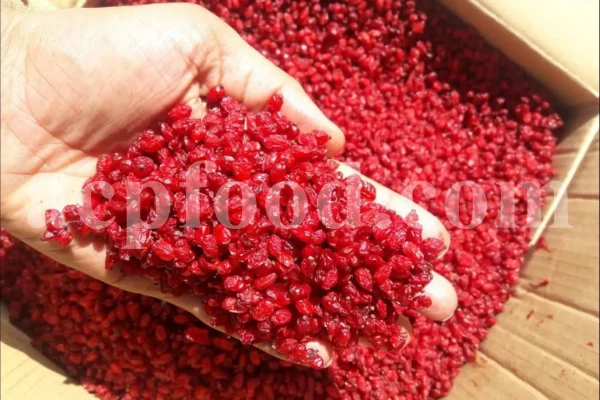
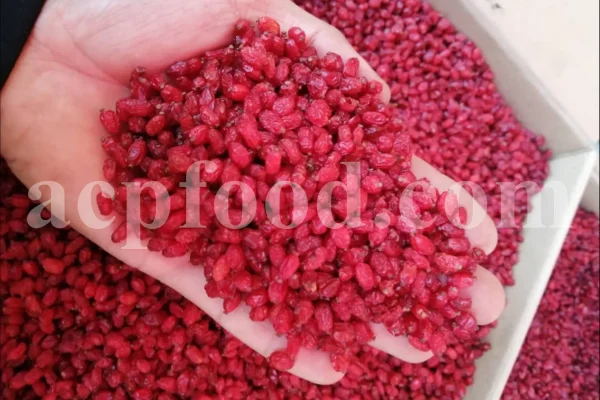
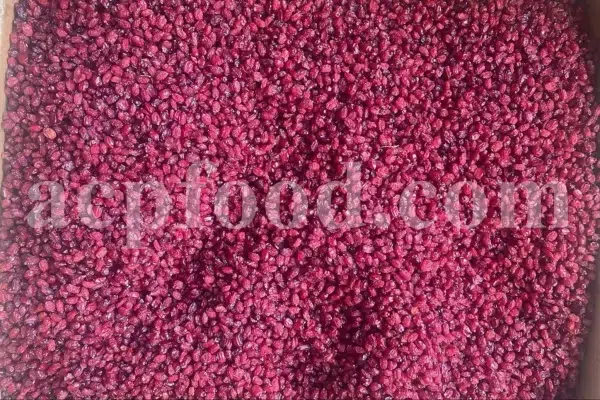
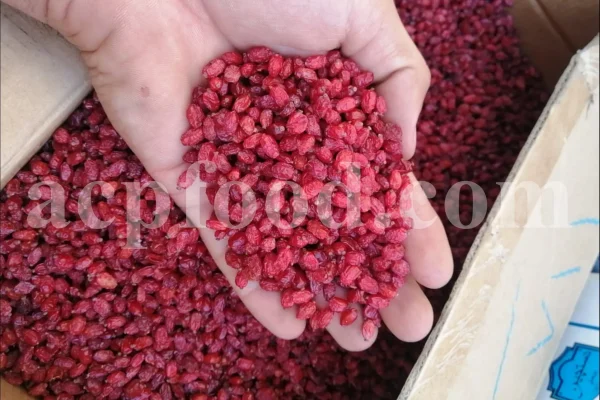
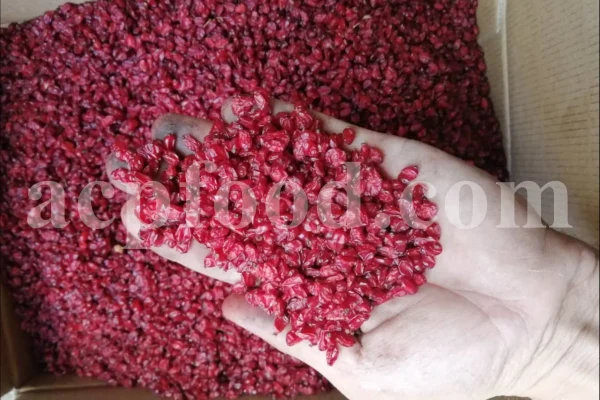
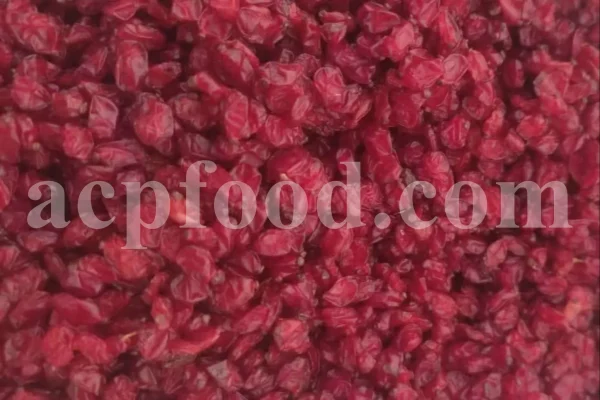
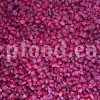

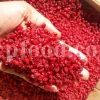
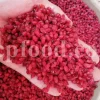

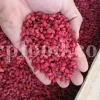
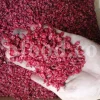

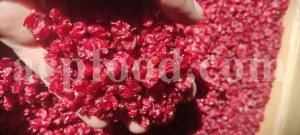
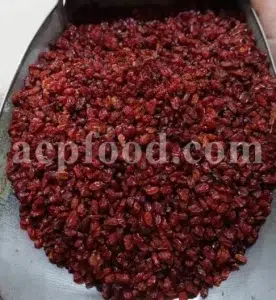
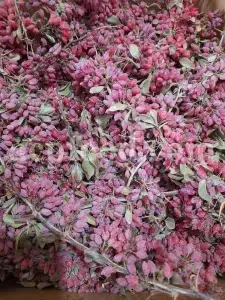

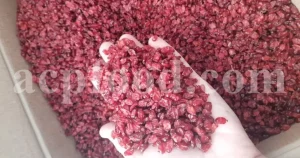
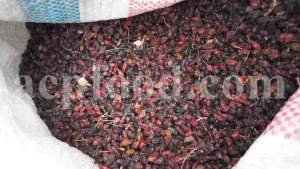
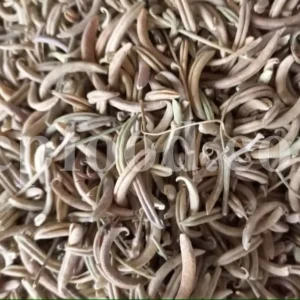
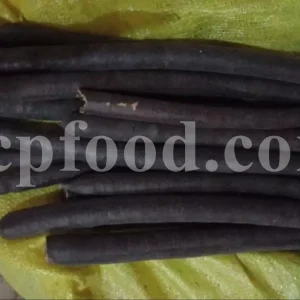
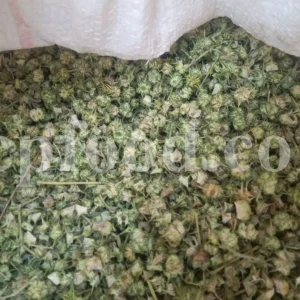
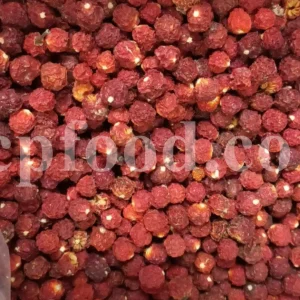
Reviews
There are no reviews yet.